Technologies
Google’s Pixel 8 Pro Has Some Big Problems: Our Review in Progress
Google’s new flagship has some serious early issues that need addressing.
There are big problems with the Google Pixel 8 Pro. With disappointing camera performance, missing features and frustrating quirks, Google’s new flagship feels half-baked at best and it’s certainly not ready to hit shelves on Oct. 12.
CNET editors have spent the past few days testing multiple models of the 8 Pro in the UK and US, and we’ve been taken aback by what we’ve found. The biggest issues are with the camera, which in some high-contrast situations produced bizarre artifacts that ruin the image.
The phone’s DNG raw images — which normally would include all of the detail that the Pixel 8 Pro’s cameras can shoot — were at first incompatible with any raw editors (including Lightroom on the device and Photoshop on desktop). This was fixed with a last-minute update from Google that applies only to new images taken (our early DNG tests are effectively dead). But DNG files remain fuzzy and noisy, beyond what we’d expect from any raw file.
Key new features such as the night time video optimization aren’t available at launch. New AI tools including the updated Call Screen and article summarizing are available in the US but not in the UK, where I’m testing. Both features are discussed at more length in CNET’s Pixel 8 review.
It’s rare to see such glaring problems from a major manufacturer so close to the device going on sale and it’s disappointing to see it on a phone we had such high hopes for. Both the Pixel 6 Pro and Pixel 7 Pro received CNET Editors’ Choice awards for their performance, neither of which suffered from these early problems, but right now we don’t recommend buying the Pixel 8 Pro until Google has addressed these issues.
It’s likely that many of the problems we’ve found can be resolved with software updates, and Google has said that a camera update that could help some of the issues we’ve found will arrive in «a couple of weeks.»
But here at CNET, we’ve decided that we need more time to fully understand the depth of the issues and we’ve opted to hold off on giving the Pixel 8 Pro a definitive rated verdict. Below you’ll find my early review of the phone with my opinions on the design, display, processor and battery, informed by multiple editors’ testing.
We’ll be updating this review over the coming days and retesting elements of the phone (especially the camera) as Google pushes out its software update. We would like to note that we haven’t found any of these issues testing the regular Pixel 8.
What does this mean for you? Well, if you’re sitting clutching your credit card looking to buy the Pixel 8 Pro, we’d advise you to wait. Keep your eye on this review as it develops and wait for our final verdict.
6 days with the Pixel 8 Pro
The Pixel 8 Pro is the latest flagship from Google that packs a host of refinements over its predecessor including a new processor, cameras and more AI skills. I loved the older Pixel 7 Pro and believed it was one of the best Android phones money could buy. The 8 Pro has a lot to live up to.
Putting aside the camera problems I’ve experienced, the Pixel 8 Pro has plenty going for it, from its solid gaming performance, its decent battery life and its slick Android 14 interface. But the most important change is that Google is committing to seven years of software updates for the phone, a huge boost over what it previously offered and a lot more over most other Android manufacturers. It means this thing will still be going strong in 2030.
There’s a lot I like about the phone and while I’ve had some success with the camera, the issues it faces need to be resolved before we could consider recommending anyone buy it.
Design and display
Physically, it’s clear to see the Pixel 8 Pro’s family resemblance to its predecessors, with the big camera bar across the back. It’s not a big design departure from last year’s model, but that rear glass panel is now frosted rather than glossy, which gives it a softer feel to hold while making it a little less prone to fingerprints. I don’t think it looks quite as premium or classy as the Pixel 7 Pro’s sage and gold design, at least not in the plain black variant I’ve been given to test.
The camera bar sticks out a long way — around 4 millimeters in fact, which is even more than on the 7 Pro. The 8 Pro is comfortable to hold, but I do sometimes find it catches when I’m trying to slide it into my jeans pocket. I’m nitpicking here, but it’s one of those things that could become more annoying over time. With a case attached that reduces the height difference between the body and the bar, the problem goes away.
The frame is made in part from recycled aluminum (just like in older Pixel phones) and the phone is IP68 rated for water-resistance, which will keep it safe from spilled drinks or when taking calls in the rain. The 6.7-inch display is the same size as on the Pixel 7 Pro. It’s bright and vibrant and easily does justice to whatever colorful YouTube or Netflix video you want to watch on the bus.
Temperature sensor
One little tweak on the back is a small circle next to the camera flash that houses a brand new feature: a temperature sensor. It allows the phone to give temperature readings from objects or surfaces. It’s easy enough to do, just fire up the temperature app and hold the phone about 5 centimeters from your object, as though you’re taking a close-up photo. Tap the screen and it’ll give you a readout on how hot that object is.
The idea is that you can use it to test the temperature of drinks before you take a big gulp, or to make sure that piece of peach pie isn’t hotter than the sun before you shovel it into your face and burn your mouth to cinders. It works well in my testing so far, with it fairly accurately showing the increase in temperature on my kettle as I boiled water for a cup of tea.
And while I can imagine it sometimes being helpful — parents could use it to check the temperature of a baby’s bottle, for example — I think its real-world application is limited. It feels like a feature that’s been shoehorned in to act as a differentiator from the competition. Heck, it can’t even take your body temperature, though Google is seeking clearance from the US FDA to use it for that purpose. And sure, the Pixel 8 Pro now has a feature that the iPhone 15 doesn’t, but is it really a feature you care about? I’m not sure that I do.
Processor and Android 14
The Pixel 8 Pro comes with Google’s latest homemade processor, the Tensor G3, but we can’t yet tell you how it performs. At the time of writing I’m unable to install any kind of benchmarking apps to directly compare it to its rivals, but anecdotally it seems like a capable chip. Navigation around the Android 14 interface is swift: Apps open without any delays and multitasking between open apps is a breeze.
Graphically demanding games like Genshin Impact, PUBG and Real Racing 3 all play with buttery-smooth frame rates at maximum graphics settings. I’ve yet to find anything that really slows the phone down. The Tensor G3 chipset also enables AI features, but their quality is uneven, with some taking so long to process that I simply didn’t bother (more on these below).
The big advancement we can confirm is longevity. Google committed to providing seven years of software and security updates to the Pixel 8 series, which is a big improvement over the four years it previously offered. By comparison, Samsung offers four years of software and five of security updates. Longer security support times are a huge way of reducing the environmental impact of phones, as the hardware on older models is often still working fine, but it’s simply not safe to keep using devices with outdated software.
Google’s software commitment means the Pixel 8 Pro should still be going strong in 2030, which is the longest of any major Android manufacturer and only really rivaled by Fairphone, which offers eight years of security updates on its latest Fairphone 5. It’s good to see Google extending its support period and I hope it encourages more manufacturers to do the same.
The Pixel 8 Pro launches with Android 14 which itself isn’t that different from Android 13, with a near-identical visual look that includes various ways to customize elements of the interface. Google has sprinkled in some additional AI features throughout though, including a new generative AI wallpaper creator.
The tool lets you select from a variety of prompts, including object words such as «bicycle» or «lighthouse,» texture words like «wood» or «bamboo» and various color and art style words to create a unique backdrop. It’s fun to play with and I’ve enjoyed experimenting with different prompt combinations to find images I like. I don’t always love the results — sometimes the AI hasn’t done a great job — and only being able to choose from a set of predefined prompts means it’s not open to the sort of wild infinite customization you might expect from generative AI.
Google has woven in AI features elsewhere into the phone, including call screening, the ability to summarize articles in web pages (both of which are exclusive to the US at launch) and better speech-to-text and translation tools. But it’s also used for image editing, with AI tools letting you selectively edit the sky in a landscape photo, make objects or people bigger or smaller in the frame or remove them completely. The results don’t always look great — at least not to my eye as a professional photographer — but they can be fun ways of tweaking more casual snaps.


I found that it took between 13 and 18 seconds for the AI to make each edit, which felt like a frustratingly long time to wait. It remains to be seen whether that’s down to the processor performance or if it’s a software issue that could be remedied. In my time with the phone, I found these delays long enough to put me off wanting to play around further. On the Pixel 8, however, these edits generally took around 5 seconds.
There’s also a new tool called Best Take, which takes a burst of images and blends them into one shot where everyone should look their best by automatically picking the best faces of a group of subjects. I’ve not found this useful in my time with the phone. It requires at least six different images of a group of people for the AI to choose from and I normally just take one or two of my friends, which isn’t enough. To make use of it, I’d have to learn to start using burst mode more often when taking group shots, which feels like I’m having to create a problem for this feature to solve.
Then again, my colleague Patrick Holland enjoyed putting the feature to use in his review of the smaller Pixel 8. Patrick found it worked well in his shots, with a mostly seamless replacement of people’s faces in the final image. Your experience with it may vary depending on how you use your phone’s camera, so take my opinion here with a grain of salt.
Camera
Speaking of the camera though, the triple rear-camera setup has had some updates, including wider apertures on both the main and telephoto lenses and higher resolution for the ultrawide lens.
But it’s the camera that’s been most problematic for us in our testing so far. Several of our test images with high contrast scenes show bizarre-looking image noise and artifacts in the shadowy areas, along with extremely aggressive software smoothing on areas that should maintain detail. I’ve found similar issues in night mode photos, too.
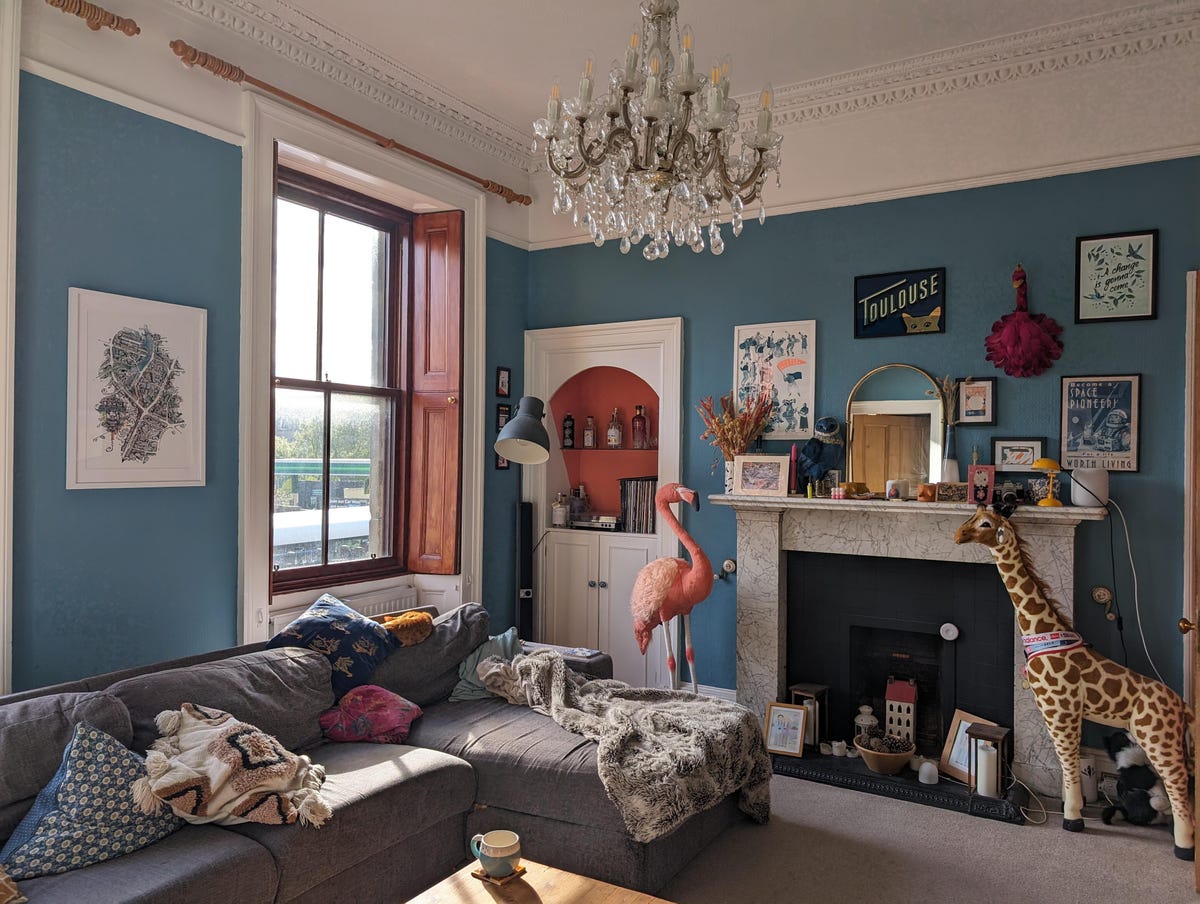

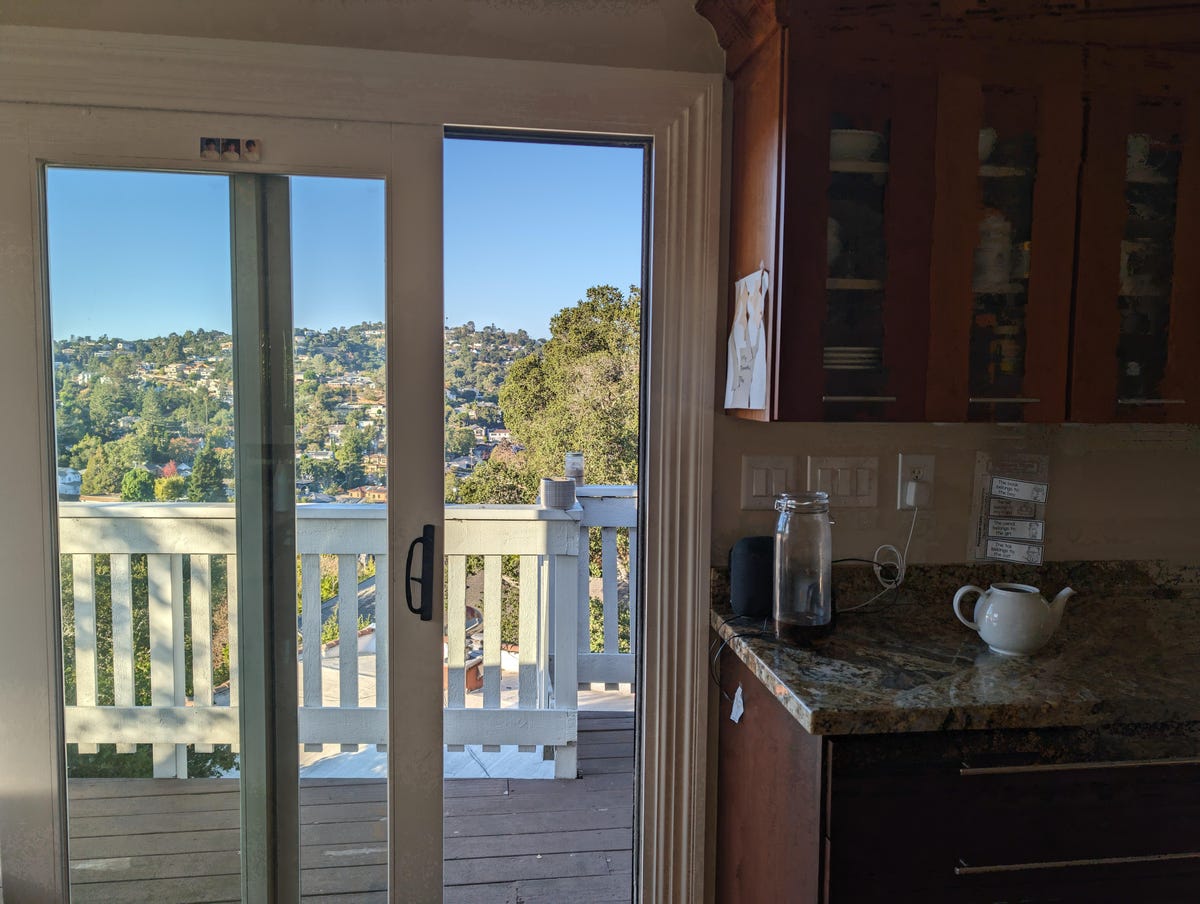
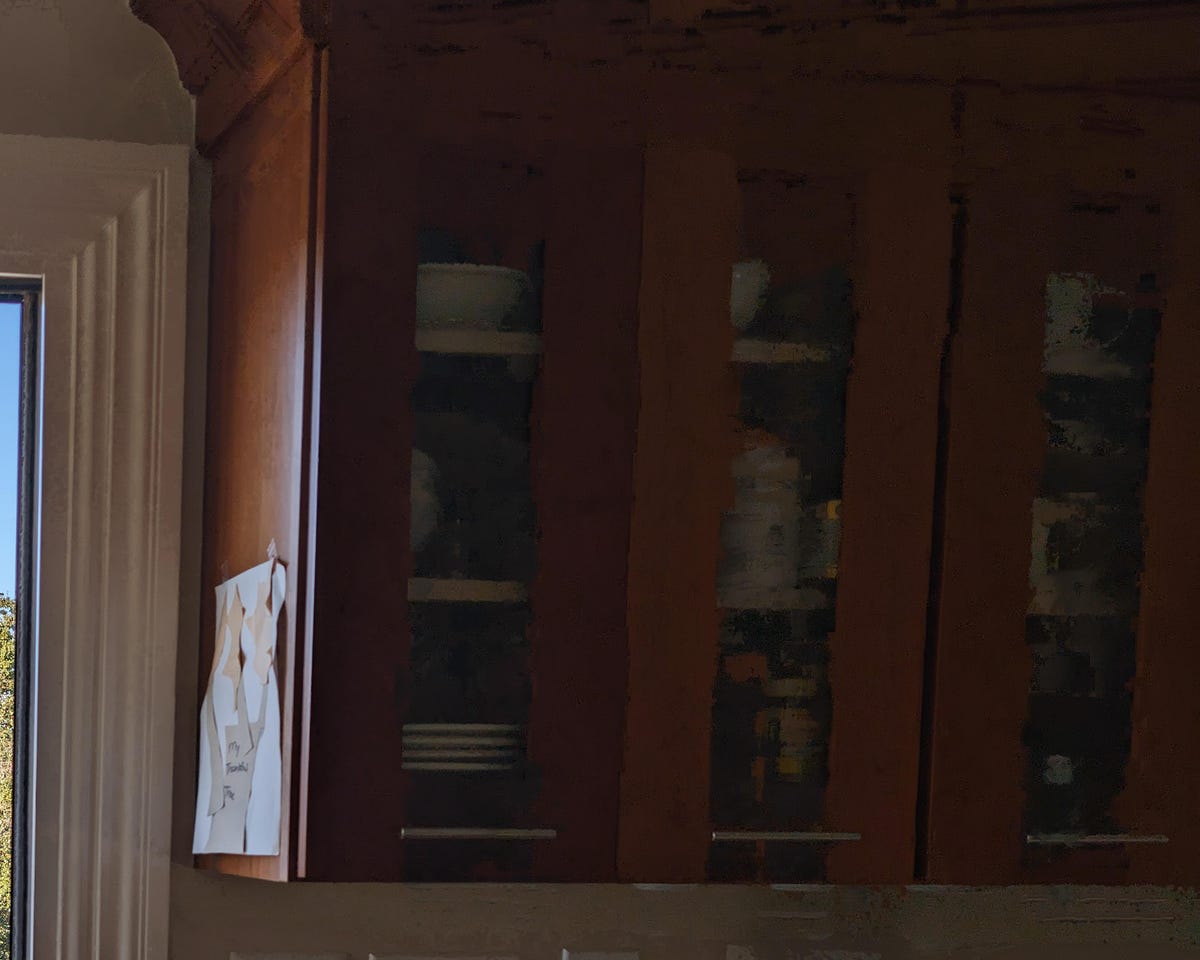
While it can shoot DNG raw files as I mentioned earlier, these come out worse, with more image noise and a weird muddiness to the scene that can’t be corrected in post. Shooting in the new high-resolution 50-megapixel mode made things even worse. Taking high-res images involved a 1- to 2-second pause with a «hold still» warning on screen, which made taking the shots feel slow and frustrating.
Google pushed out some big updates to the camera software during our testing period, but it’s clear that something is still wrong. As the cameras are such an important factor of any flagship phone, we’re keen to see a solution here and we’ll continue testing over the coming days and weeks.
It’s not all bad, though. Some images taken with the wide, ultrawide or 5x zoom lens have come out perfectly well in good lighting and I’ve enjoyed using the long exposure mode to add some ethereal blurred movement effects to some photos.
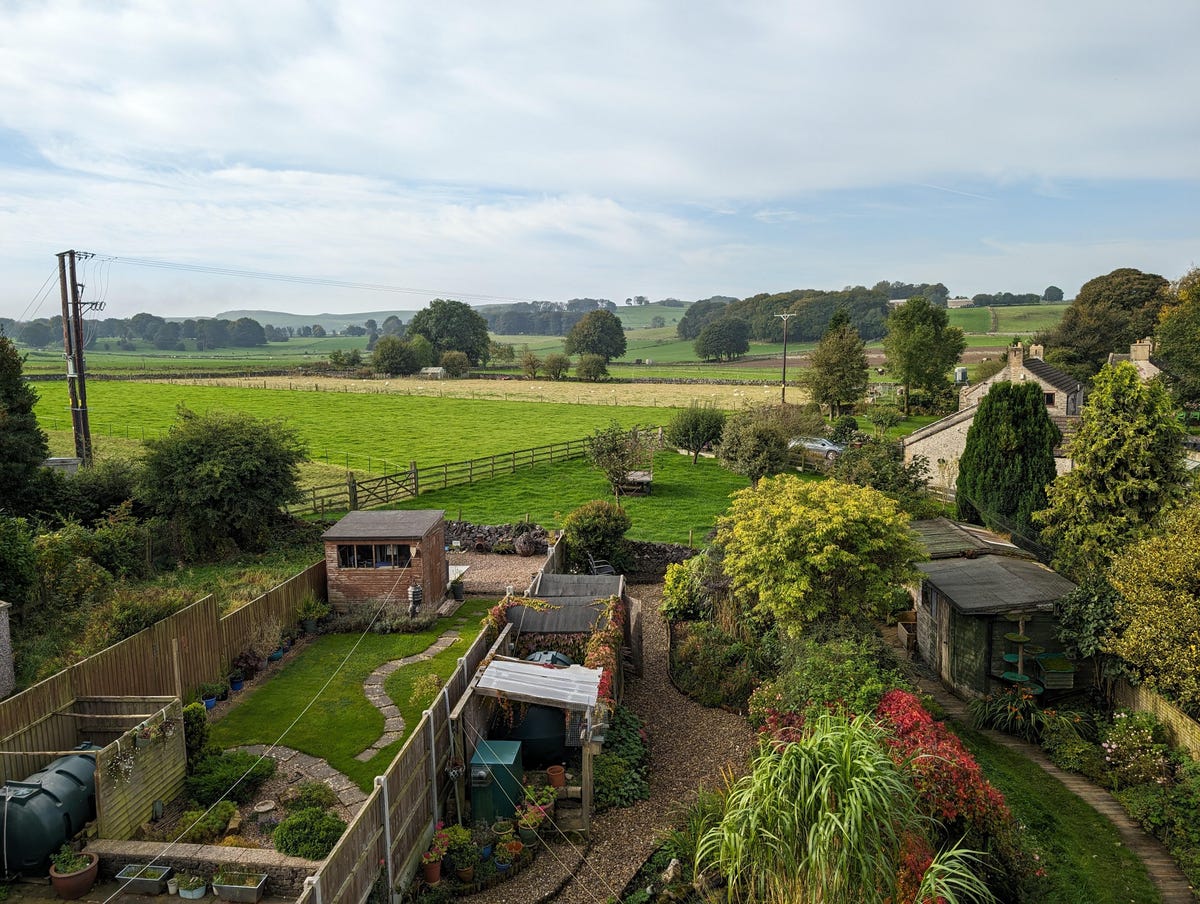
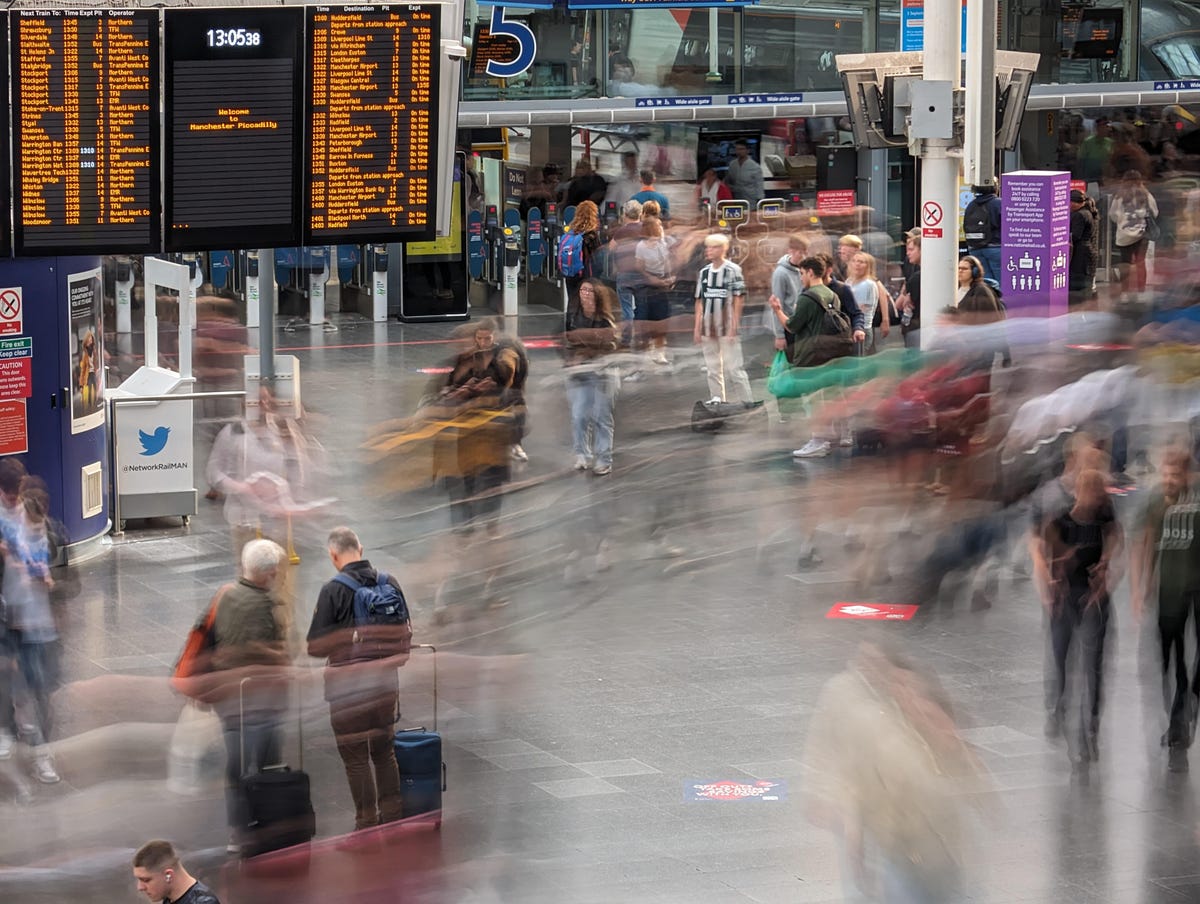
The Pixel 7 Pro had a superb camera that was capable of taking glorious images with any of its lenses. I don’t know why Google is struggling to get the Pixel 8 Pro working as it should, but it’s clear that fixes are required.
Battery
Stuffed inside the Pixel 8 Pro is a 5,050-mAh battery, which put in a decent performance on our various battery drain tests. After 1 hour of streaming a YouTube video at max brightness the phone had dropped from full to 97% remaining, which is good. After the third hour it had dropped to 84% which is below what we’ve seen from the iPhone 15 series, but in line with the Galaxy S23.
It’s a demanding test and in everyday use you shouldn’t struggle to get through a whole day of mixed use. Just avoid spending hours streaming video or playing demanding games if you want to have juice left to call a cab home after your night on the town. As with most phones, though, you’ll almost certainly want to give it a full charge when you go to bed each night.
Should you buy the Pixel 8 Pro?
The issues we’ve found on multiple models of the Pixel 8 Pro suggest that there are software issues with the phone that aren’t simply restricted to one dud unit. And while we expect Google to quickly roll out fixes to address these, the fact remains that right now, Google wants $1,000 for a phone that has major problems.
CNET’s advice is to hold on to your money and check back with us in the coming days as we continue to test the 8 Pro and the updates it’ll likely receive.
Technologies
Today’s NYT Connections Hints, Answers and Help for Dec. 14, #917
Here are some hints and the answers for the NYT Connections puzzle for Dec. 14, #917.

Looking for the most recent Connections answers? Click here for today’s Connections hints, as well as our daily answers and hints for The New York Times Mini Crossword, Wordle, Connections: Sports Edition and Strands puzzles.
Today’s NYT Connections puzzle is an odd one in that the purple category, usually the toughest, was the easiest — if you know a certain group of fictional animals. If you need help sorting them into groups, you’re in the right place. Read on for clues and today’s Connections answers.
The Times now has a Connections Bot, like the one for Wordle. Go there after you play to receive a numeric score and to have the program analyze your answers. Players who are registered with the Times Games section can now nerd out by following their progress, including the number of puzzles completed, win rate, number of times they nabbed a perfect score and their win streak.
Read more: Hints, Tips and Strategies to Help You Win at NYT Connections Every Time
Hints for today’s Connections groups
Here are four hints for the groupings in today’s Connections puzzle, ranked from the easiest yellow group to the tough (and sometimes bizarre) purple group.
Yellow group hint: Butter up.
Green group hint: Like The Little Match Girl.
Blue group hint: Letter that makes no sound.
Purple group hint: Oink!
Answers for today’s Connections groups
Yellow group: Lay it on thick.
Green group: Hans Christian Anderson figures.
Blue group: Silent «L.»
Purple group: Fictional pigs.
Read more: Wordle Cheat Sheet: Here Are the Most Popular Letters Used in English Words
What are today’s Connections answers?
The yellow words in today’s Connections
The theme is lay it on thick. The four answers are fawn, flatter, gush and praise.
The green words in today’s Connections
The theme is Hans Christian Anderson figures. The four answers are duckling, emperor, mermaid and princess.
The blue words in today’s Connections
The theme is silent «L.» The four answers are calf, chalk, colonel and would.
The purple words in today’s Connections
The theme is fictional pigs. The four answers are Babe, Napoleon, Piglet and Porky.
Don’t miss any of our unbiased tech content and lab-based reviews. Add CNET as a preferred Google source.
Technologies
Today’s NYT Strands Hints, Answers and Help for Dec. 14 #651
Here are hints and answers for the NYT Strands puzzle for Dec. 14, No. 651.

Looking for the most recent Strands answer? Click here for our daily Strands hints, as well as our daily answers and hints for The New York Times Mini Crossword, Wordle, Connections and Connections: Sports Edition puzzles.
Today’s NYT Strands puzzle may leave you wanting to make a reservation at a fancy restaurant. Some of the answers are difficult to unscramble, so if you need hints and answers, read on.
I go into depth about the rules for Strands in this story.
If you’re looking for today’s Wordle, Connections and Mini Crossword answers, you can visit CNET’s NYT puzzle hints page.
Read more: NYT Connections Turns 1: These Are the 5 Toughest Puzzles So Far
Hint for today’s Strands puzzle
Today’s Strands theme is: Pricy pairing.
If that doesn’t help you, here’s a clue: May I see the menu?
Clue words to unlock in-game hints
Your goal is to find hidden words that fit the puzzle’s theme. If you’re stuck, find any words you can. Every time you find three words of four letters or more, Strands will reveal one of the theme words. These are the words I used to get those hints but any words of four or more letters that you find will work:
- FLOP, POLL, POLLS, RARE, CARE, HARE, SURE, SPAT, SPATS, PATS, CRUST, RUST
Answers for today’s Strands puzzle
These are the answers that tie into the theme. The goal of the puzzle is to find them all, including the spangram, a theme word that reaches from one side of the puzzle to the other. When you have all of them (I originally thought there were always eight but learned that the number can vary), every letter on the board will be used. Here are the nonspangram answers:
- CRAB, RIBEYE, SHRIMP, LOBSTER, SCALLOP, SIRLOIN
Today’s Strands spangram
Today’s Strands spangram is SURFANDTURF. To find it, start with the S that’s the far-left letter on the top row, and wind down.
Don’t miss any of our unbiased tech content and lab-based reviews. Add CNET as a preferred Google source.
Technologies
Can My iPhone 17 Pro Match a 6K Cinema Camera? I Teamed Up With a Pro to Find Out
I put a video shoot together to see just how close an iPhone can get to a pro cinema setup.
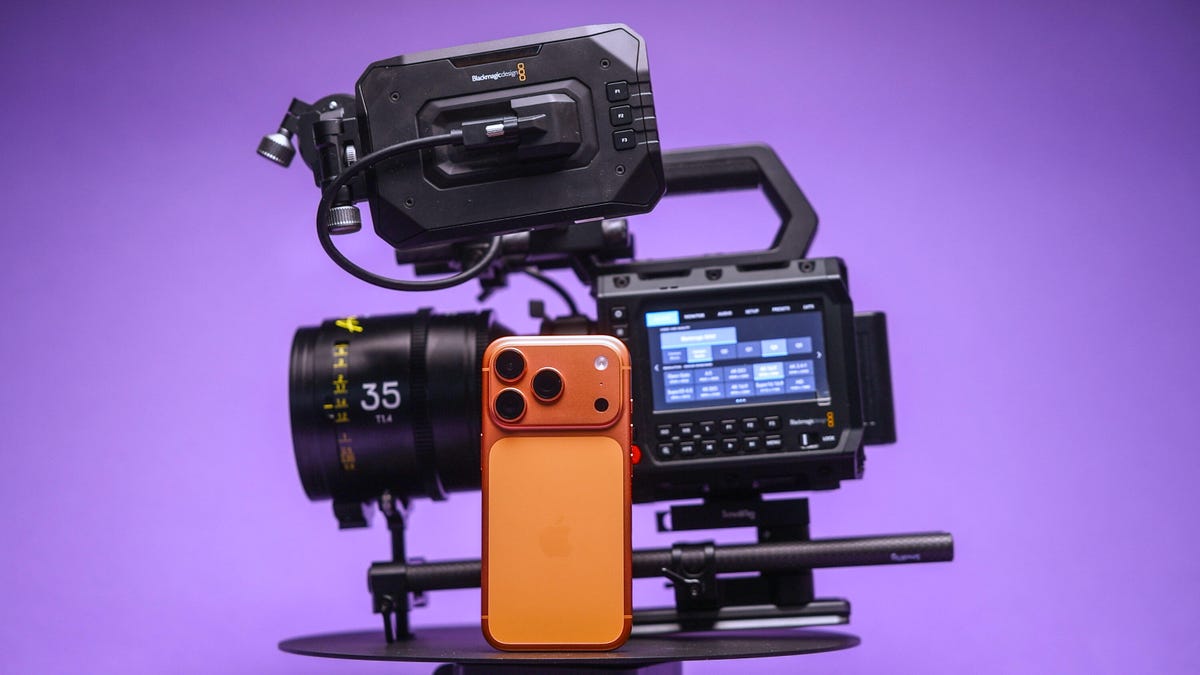
The iPhone 17 Pro packs a powerful video setup with a trio of cameras, large image sensors (for a phone), ProRes raw codecs and Log color profiles for advanced editing. It makes the phone one of the most powerful and dependable video shooters among today’s smartphones.
Apple often boasts about famous directors using the iPhone to shoot films and music videos. The company even records its event videos for new products with the iPhone.
But is the iPhone really good enough at shooting video to replace a traditional cinema camera? To see how good the iPhone 17 Pro is for professional use, I gave it a proper test.
I put together a video shoot where I pitted the $1,000 iPhone against a full professional cinema camera rig, worth thousands of dollars, to see just how well Apple’s phone can hold its own. I planned a video production at my favorite coffee roaster in Edinburgh, called Santu, which is based in a stunning building that I knew would look amazing on camera.
To give both cameras the best chance, I worked with Director of Photography Cal Hallows, who has been responsible for production on major shoots around the world, working with brands including Aston Martin, the BBC, IBM and Hilton Hotels.
Here’s what happened.
Our filming equipment
We didn’t use any external lenses with the iPhone; instead, we relied on either the built-in main, ultrawide or telephoto options. I shot my footage using the BlackMagic Camera app. I had a Crucial X10 external SSD since I was recording in Apple’s ProRes raw codec, which creates large files.
I also had a variable neutral density filter to achieve a consistent shutter speed. For some shots, I used Moment’s SuperCage to help give me a better grip — and therefore smoother footage. But for other shots, I just used the phone by itself to make it easier to get into tight spaces. More on that later.
The iPhone’s competition was the $3,300 BlackMagic Pyxis 6K. It’s a professional cinema camera with a full-frame 6K resolution image sensor and raw video capabilities. I paired that with some stunning pro cine lenses, including a set of Arles Primes, the XTract Probe lens from DZO Film and a couple of choice cine primes from Sigma. It’s a formidable and pricey setup for any cinematographer.
The shoot day
We shot over the course of a single day. I’d already created a rough storyboard of the shots I wanted to get, which helped me plan my angles and lens choices. I wanted to try and replicate some angles directly with both cameras.
This shot of the store room being opened (above), for example — was a lovely scene, and I didn’t see much difference in quality between the iPhone’s video and the BlackMagic’s. This was the case with a few of the scenes we replicated. Apple’s ProRes raw codec on the iPhone provided a lot of scope for adjusting the color, allowing us to create beautiful color grades that looked every bit as striking as footage from the Blackmagic camera.
Sure, you could tell that they were different, but I couldn’t honestly say if one was better than the other.
Other shots were more difficult to replicate. I love this low-angle of the roastery owner, Washington, pulling his trolley through the scene. On the iPhone, the main lens wasn’t wide enough to capture everything we wanted but switching to the ultrawide was too much the other way and we ended up having spare gear and other people in the frame.
This made several shots a challenge to replicate as the fixed zoom ranges of the iPhone simply didn’t translate to the same fields of view offered by our lenses on the BlackMagic camera. As a result, getting the right framing for shots from the iPhone was trickier than I expected. But focal length wasn’t the only reason using «real» lenses was better.
The DZO Arles Primes are awesome cinema lenses that offer wide apertures that allowed us to shoot with gorgeous natural bokeh. We used this to our advantage on several shots where we really wanted the subject to be isolated against an out-of-focus background.
Secret weapons
That was especially the case when we used our secret weapon: the DZO Films Xtract probe lens. This bizarre-looking, long, thin lens gives both a wide-angle perspective coupled with a close focusing distance.
I loved using the probe lens for this shot, particularly where we’ve focused on exactly where Washington was using the bean grinder. I tried to replicate it on the iPhone using the close-focusing ultrawide lens and the shot looks good, but it lacks the visual sophistication that I can get from a big, professional camera. Especially because the lack of background blur makes it easier to see distracting background items stored under the counter that are otherwise «hidden» in the blur on the main camera.
But the iPhone has its own secret weapon, too. Its size. The tiny dimensions of the iPhone — even with a filter and the SSD crudely taped to it — is so small that we were able to get shots that we simply couldn’t have achieved with the big cinema camera.
In particular, this shot, where I rigged the iPhone to an arm inside the cooling machine so that it travelled around as the beans were churned. I love this shot — and a top-down view I shot of the arms turning beneath. Both angles give this incredible energy to the film and I think they are my favourite scenes of the whole production. It wasn’t easy to see the phone screen in these positions but SmallRig’s wireless iPhone monitor made it much easier to get my angles just right. Trying to rig up a large, heavy camera and lens to get the same shots was simply out of the question.
How well did the iPhone compare?
I’m really impressed with both cameras on this project, but my expert Director of Photography, Cal, had some thoughts, too.
«The thing I really found with the iPhone,» Cal explained, «was simply the creative freedom to get shots that I’d have never had time to set up. There’s only so long in a day and only so long you have access to filming locations or actors, so the fact that you can just grab your iPhone and get these shots is amazing.»
«I have used my iPhone on professional shoots before. One time in particular was when I was driving away from set and I saw this great sunset. If I’d have spent time rigging up my regular camera, I’d have missed the sunset. So I shot it on my phone and the client loved it — it ended up being the final shot of the film. At the end of the day, a good shot is a good shot and it doesn’t matter what you shot it with,» said Cal.
So was it all good for the iPhone?
«The depth of field and the overall look of the cinema lenses still come out on top — you’re just not going to get that on a phone,» explained Cal. «When it came to grading the footage, I had to use a lot of little workarounds to get the iPhones to match. The quality quickly started to fall apart in certain challenging scenes that just weren’t a problem with the BlackMagic.»
So it’s not a total win for the iPhone, but then, I never expected it to be. The iPhone was never going to replace the pro camera on this shoot, but it instead allowed us to augment our video with shots that we would otherwise never have gotten.
I love the creative angles we found using just the phone, and while Cal struggled to balance its colors as easily, the footage does fit in nicely with the rest of the video and makes it more dynamic and engaging as a result.
And that’s not to say the shots we didn’t use from it weren’t good. I’m actually impressed with how the iPhone handled most of the things we threw at it.
So don’t assume that if you want to get into filmmaking, you need to drop tens of thousands on a pro cinema camera and a set of cine primes. Your iPhone has everything you need to get started, and it’ll let you flex your creativity much more easily.
Our days of shooting, editing and grading have proven that the iPhone isn’t yet ready to be the only camera you need on a professional set. But mix its small size in with your other cameras, and then you’ve got yourself a truly powerful production setup.
-

 Technologies3 года ago
Technologies3 года agoTech Companies Need to Be Held Accountable for Security, Experts Say
-

 Technologies3 года ago
Technologies3 года agoBest Handheld Game Console in 2023
-

 Technologies3 года ago
Technologies3 года agoTighten Up Your VR Game With the Best Head Straps for Quest 2
-

 Technologies4 года ago
Technologies4 года agoBlack Friday 2021: The best deals on TVs, headphones, kitchenware, and more
-

 Technologies4 года ago
Technologies4 года agoVerum, Wickr and Threema: next generation secured messengers
-

 Technologies4 года ago
Technologies4 года agoGoogle to require vaccinations as Silicon Valley rethinks return-to-office policies
-

 Technologies4 года ago
Technologies4 года agoOlivia Harlan Dekker for Verum Messenger
-

 Technologies4 года ago
Technologies4 года agoiPhone 13 event: How to watch Apple’s big announcement tomorrow
